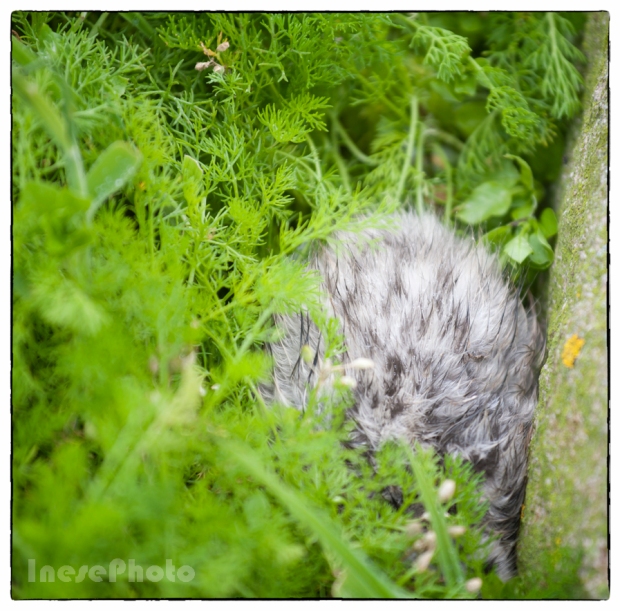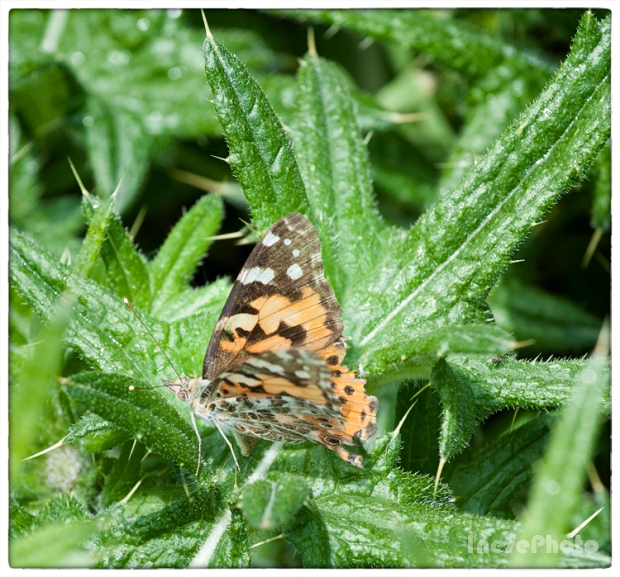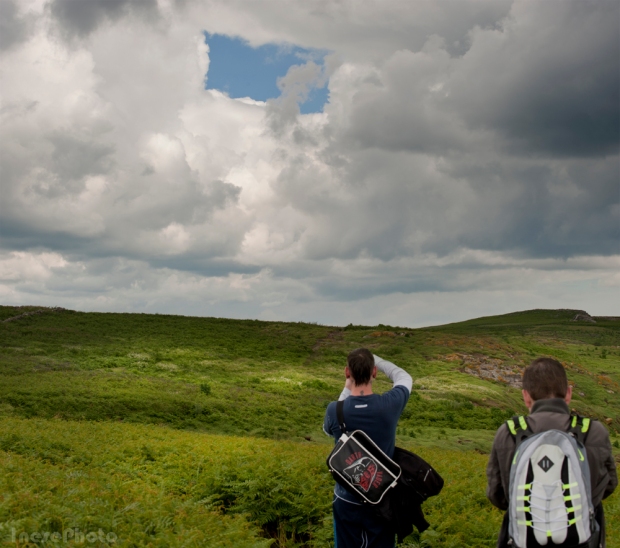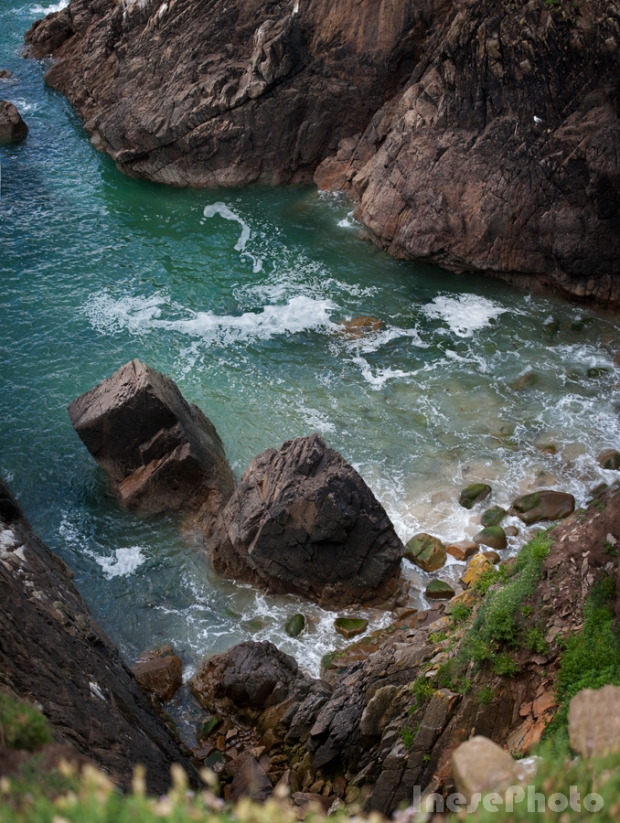This young European Shag was a juvenile when I saw him last year, almost in the same place, and here is his mama and his new brother or sister. I recognized him because of his distinctive shyness, in opposite to his mama who is bold and ill-tempered 🙂
I have never seen a puffin chick. Something to look forward to.
All sorts of seagulls in the island also have chicks around this time. The parents are standing on the top of the rocks watching their young, ready to swoop and attack an intruder.
Four species of seagulls breed on Saltees. Herring gull is on the Irish Red List of the most threatened bird species. In the 1980s there were about 500 pairs on Great Saltee, and now just over 50 pairs. Good that they can live up to 30 years.
This Herring gull clearly enjoyed posing for a portrait.
Two species of the Black-backed seagulls are nesting on the island. We didn’t want to upset the male perched on the rock and took pictures of the chicks from a distance. This is a Greater Black-backed gull, one of the largest gulls in the world. In one of my previous blogs, I have pictures of this gull in flight.
Two fluffy Black-backed gull chicks enjoying the sun.
After leaving the Gannet colony I suggested that we should explore the north side of the island. It looked like a green meadow sprinkled with some white flowers. Off we went, and on our way we came across some nests with the eggs and the chicks wandering around. The eggs belong to different species of the gulls. Later I googled ‘seagull eggs’, and was shocked as all the pages that came up were related to cooking and eating these eggs!
Most of the seagulls lay three eggs. One must be stolen from the nest.
These are the eggs of a Great Black-backed gull. The pair of them is nesting in exactly the same place as last year. You can enlarge the picture to see the chick use its egg tooth to break through the egg shell. It might take 24 hours or even longer.
This speckled blue eggshell is quite big which means that it belongs to a seagull.
A chick is hiding in the weeds and playing dead.
After that, our detour took a bad turn, literally. We turned to the East and gradually entered the area covered with the ferns. In the beginning we managed to keep to the frail path but it led us nowhere. The seagulls hated us. Then the thorns and brambles came into the picture, and the path completely disappeared. My companions suggested that we keep moving along the coast no matter what, but the green sea of ferns might hide dangerous holes and who knows what else – I didn’t want to dive in it again.
We were right in the middle of the green area in the picture below. If you zoom it, you will see a stone wall crossing the island, with the seagulls perched on top of it. I suggested we walk to the wall, climb on it, and walk on top of the wall until we reach a surface free of vegetation. So we did. The wall wasn’t flat on top, of course. The rocks were sharp and slippy, I fell, and my backside stuck between the rocks like a keystone. If I were alone I would cry. Thankfully, I was lifted up and put on the straight and narrow again. After a while we reached the main path and thus escaped being consumed by ferns. Lesson learned – keep to the main path because there is no other.
Beautiful weather had changed and the drizzle started to thicken. Suddenly the dark clouds opened in the middle revealing a perfect rectangle. Was it some sort of a message?
Another surprise – two pairs of ringed pigeons. How did they make it to the island?
On our way to the boat we returned to the Puffin cliffs.
I just cannot stop taking pictures of puffins. This one came running – sweet, funny bird!
Thank you for sharing the dangers of this trip with me! The last blog about Saltee Islands is coming next Saturday!
 Have a wonderful weekend!
Have a wonderful weekend!


















Breathtaking images, I love the way you capture birds
Thank you so much, Maria!
Delightful! I love Puffins! We see many Cormorants on the river near our home. They like to dry their wings on the wire netting that keeps our swimming baths safe from sharks.
Thank you for your comment, Margaret! I have learned so much from it. The protective wire nets is something I have never heard about 🙂 I love to learn from other bloggers about the life in their land.
We have Cormorants too, but they are always at some distance. European shags living on the island let me come very close.
I learn so much from your experiences, Inese. Sticking to the path is a great reminder, also take it slow on crooked rocks which are slippery. Your description made me chuckle (sorry) about your bum being in a keyhole. 🙂
Your seagull photos are so unique with the ringed wings seagulls beautiful in their uniqueness.
The puffin coming running and the shy graybird with a cranky mother really touched me in how truly perceptive you are, Inese. Someday soon I will post a series on a singular cicada whose one dwarf wing caused him to wobble and fall, I talked to him and gently put him in the shade. I saw a comment of yoyr talking even to bugs. This one’s throat looked scaly like a frog. Poor little handicapped creature touched my heart. ❤
I am delighted that you have learned a lot about the birds, Robin 🙂
So sorry about the cicada. Hope he lived a long life. ❤
Thanks for the lovely photos. I hope the fall did not douch harm.
Thank you Imelda! No, not at all 🙂 I just like to add some drama to the story 😉
I relly like the lines and composition of the third image. All of them pretty wonderful
Thank you so much! Glad you like the pictures.
Thank you for sharing this beauty with us, Inese 🙂
Thank you for stopping by, Irene! When I see something beautiful I just want to share it 🙂
I know that feeling Inese, when I walk in beautiful nature, I have the same kind of feeling 🙂
❤
Your photos are so beautiful and vibrant, Inese! I love your vision! I think you are doing a wonderful job when showing us the beautiful things that surround us and of which we forget sometimes.
Thank you so much, Mihaela! You know and appreciate beauty in everything.
Awww.., I love the first image so much! You captured the spirit, or should I say, the shyness of this little fellow! He might be shy but elegant too!
Vivienne X
Thank you so much! Yes, elegant and very quiet. He doesn’t hiss like his mother does when we walk past their rock. I call him Little Prince.
How sweet! Each has different ‘personality’, just like us!
True.